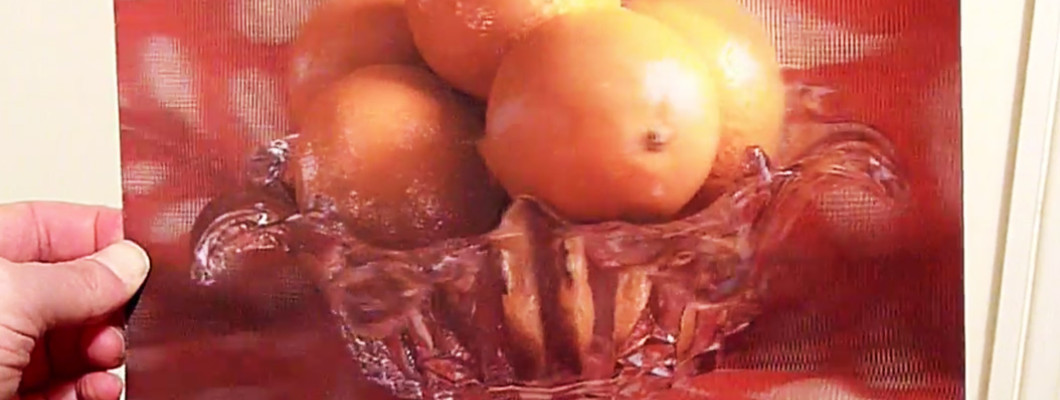
3D Lenticular Still Life
Jay Howse has created this fantastic photorealistic lenticular image showing lots of reflections and refractions using our fruit bowl scan from the free scanning reflective surfaces tutorial we wrote in 2016. The image uses a wide angle lens for which as Jay describes is not always considered particularly suitable for 3D work but does in fact, given enough print resolution yield better results than using a narrow angle lens for certain types of image. The image is more comfortable to view and allows a much wider range of head movement before the image 'flips'
Most Lenticular images have a subtle 3D effect as you move from side to side, or sometimes they animate a sequence of frames or flip between 2 or 3 different images. Jays technique uses similar principle but gives a much greater feeling of depth and solidity and also provides vertical as well as horizontal parallax.
The image below shows the lens array that Jay is using, which consists of a plastic sheet around 6x6" covered in tiny 1mm lenses arranged in a hexagonal/honeycomb pattern supplied by a company in the US called FresnelTech. This image is taken from another project using another of our scans, you can watch the video here.
You can purchase some of Jays Lenticular images on his Etsy page here
View more of his work and videos on his Youtube Channel
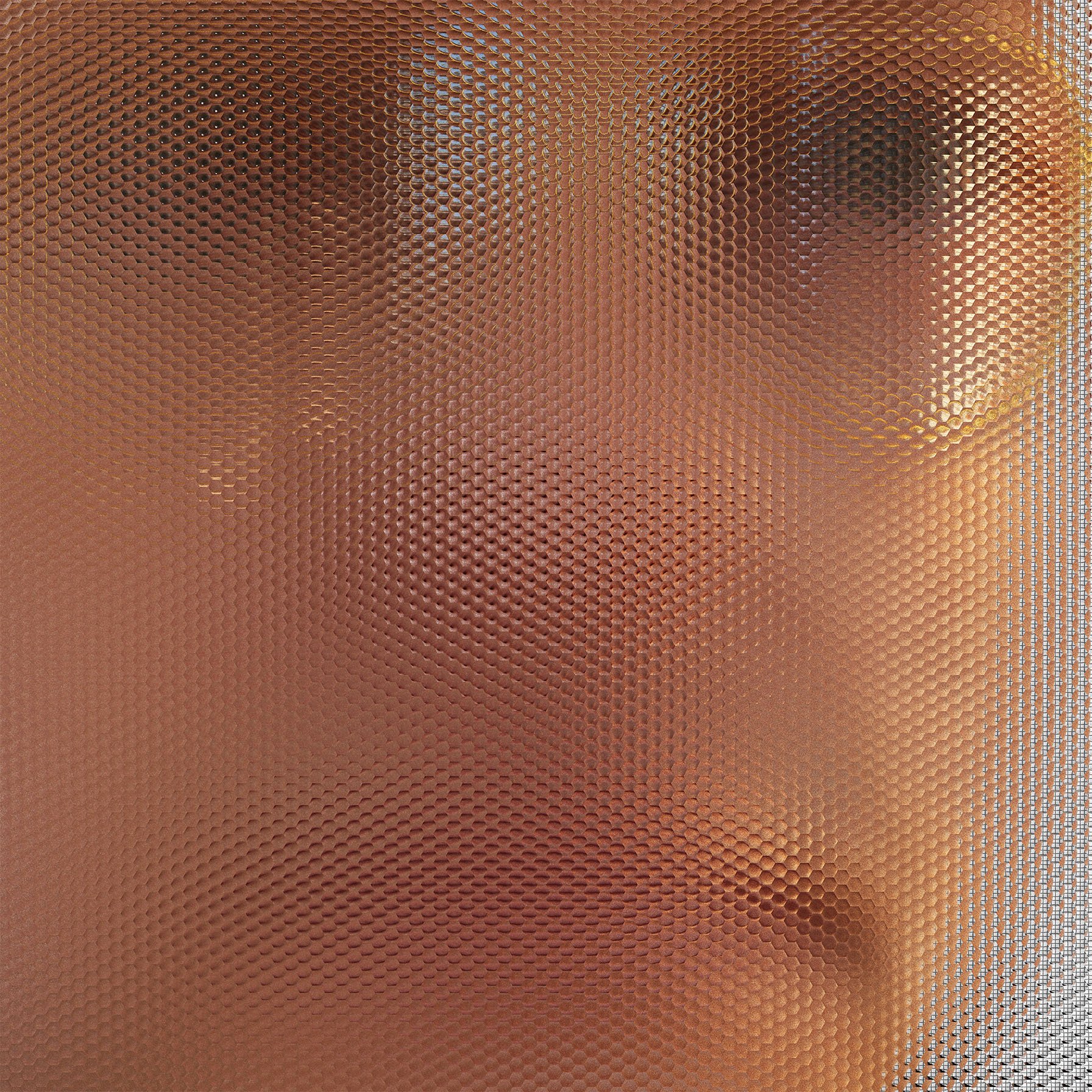
Fruit Bowl Scan
Click an image below to read the full article and download the model.

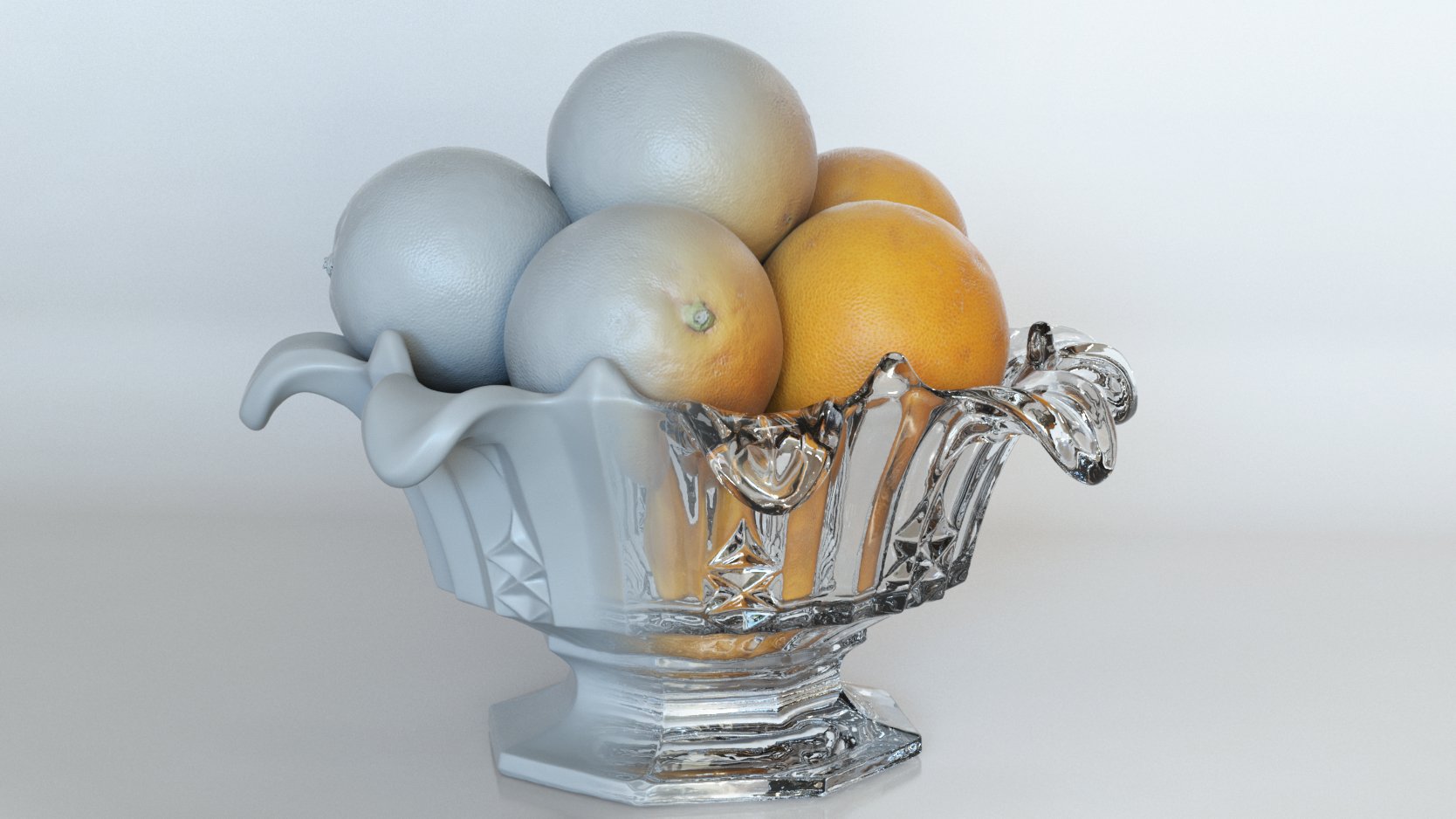
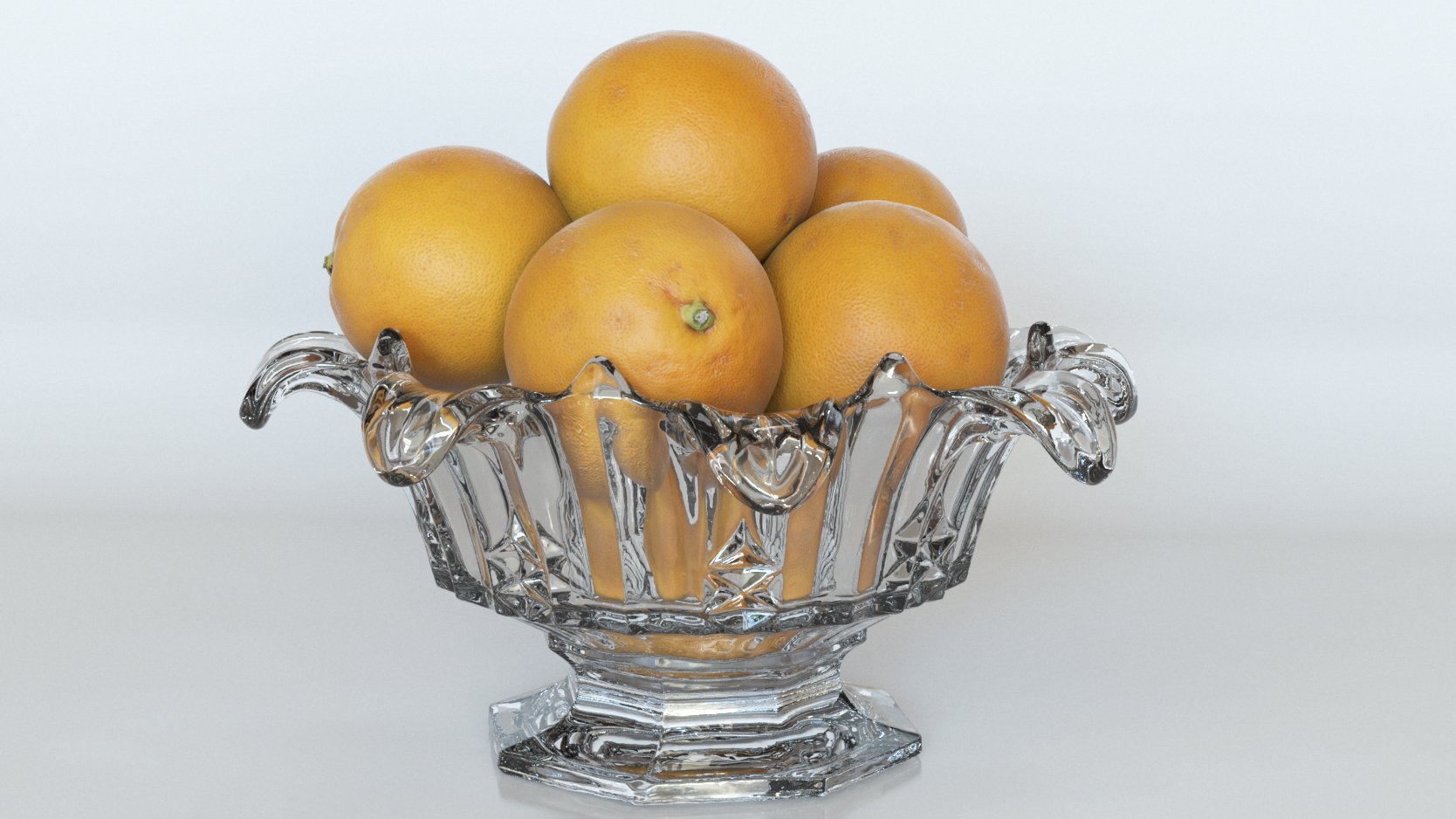
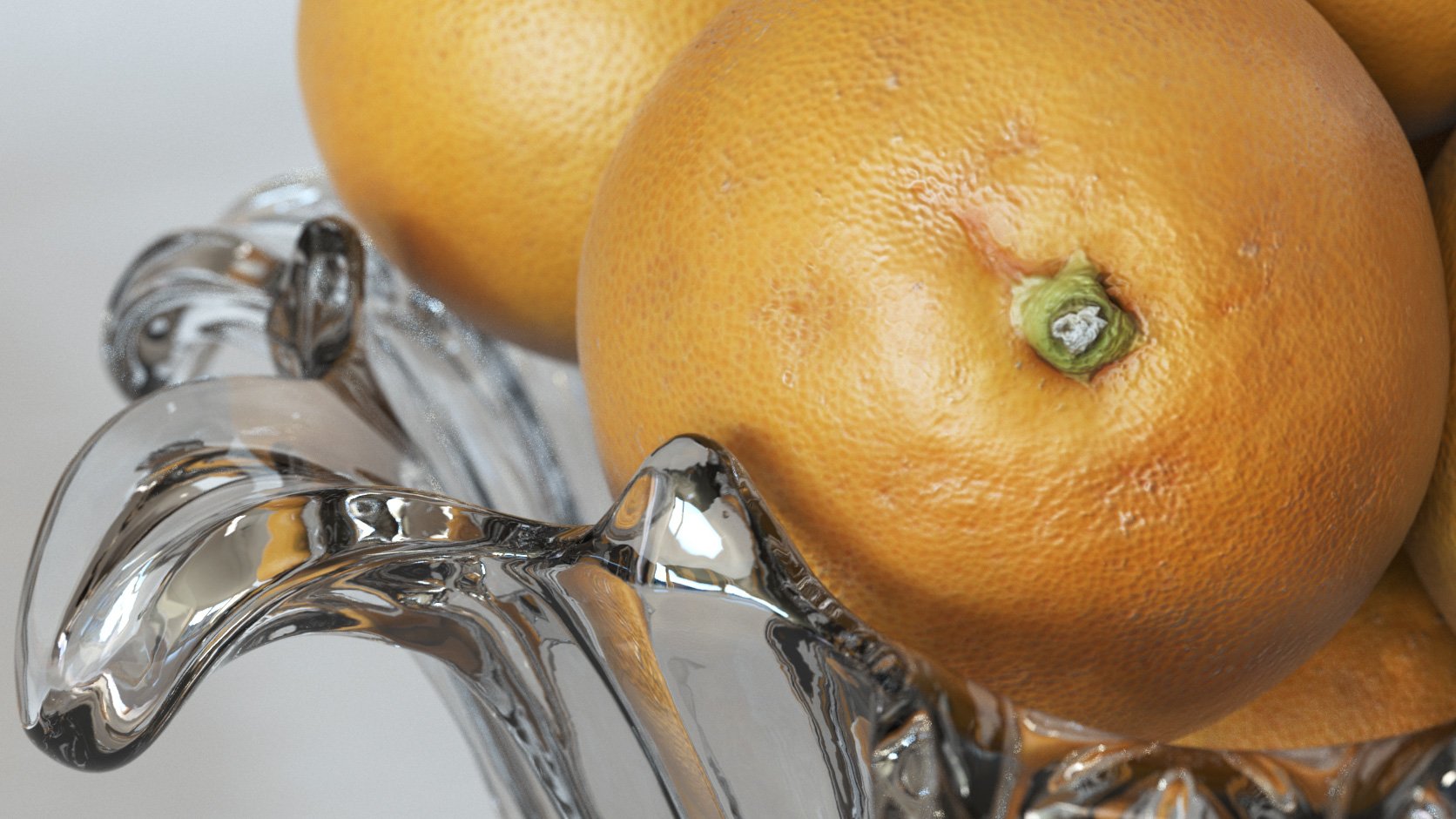
8 Comment(s)
Nice! Would be nice to have a tutorial on how to do this properly! Thank you!
1
1
1
Hey,
Thanks so much for this post! That still life is so beautiful! I would be very interested in seeing more of his work!
Best,
Dennis
1
1
1
Hi, I'm Jay Howse, the creator of the fruitbowl lenticular image (and many others)
I appreciate the blog post, I only just noticed it! Just to clarify some things in the article, most of the images I do (including the fruitbowl) use a lenticular lens, which consists of hundreds of vertical cylindrical lenslets. These can give you 3D in the horizontal axis but not in the vertical, so as you move from side to side the image will change according to your position, but moving up and down will have no effect
A few of my images, including the face model mentioned in the article use a different type of lens sheet, with thousands of hexagonal lenses arranged in a honeycomb pattern. These can give both horizontal and vertical 3d parallax but they are more complicated to make!
At some point I'm hoping to use some more of the 3dscanstore face models for more 3d portrait work.. Possibly combing it with some of the deformers and rolling shutter experiments by Lee Griggs in one of your previous blog posts! Jay
1
1
1
1
1
1
1
1
1
1
1
1
1
1
1
1
Leave a Comment